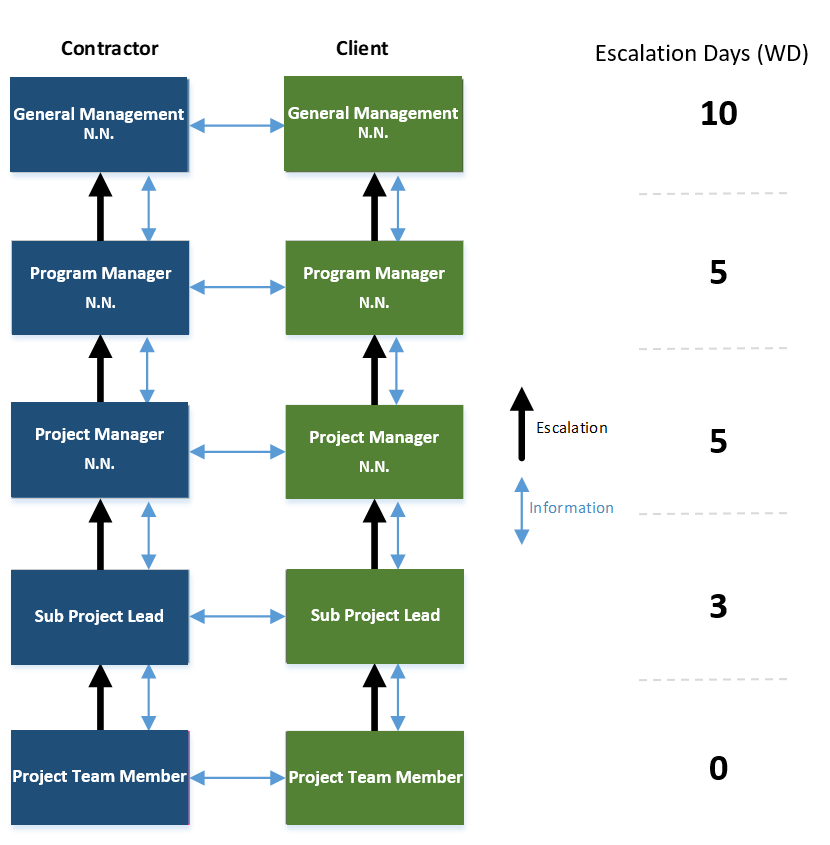Summary
Escalations are nothing bad in the project or program. They are the demand for spontaneously necessary or not yet taken decisions in a defined way – provided that a regulated governance is established.
Rules
The facts of the case should always be described and agreed upon by both parties (customer and contractor).
Contents of the escalation
- Precise description of the facts so that they can be understood directly by third parties.
- In what area and at what time did the facts arise?
- Who put the facts on the agenda in which reporting medium (e.g. weekly status report)?
- What has been done to avoid the original risk or problem, to solve it when it occurs or to mitigate it?
- Who was involved in the solution search?
- How time-critical is the situation or by when is a solution needed?
- Identification of the degree of risk and evaluation of the impact.
- Which activities are proposed for the solution?
- Description of the solution approach with estimation of the timeline, the resources and the name of the person responsible for the solution.
Communication
- Escalation always via e-mail. Mails that do not contain all of the above should be returned.
- Clear mention of the word “ESCALATION” in the subject line as well as in the mail itself.
Further information on the communication rules can also be found here.
Escalation steps
- All possible measures should be taken to resolve an escalation issue at the lowest level. Before starting an escalation process, the consequences should be clearly articulated.
- At each stage, an attempt should be made between both parties to find a solution. If this is not possible, the escalation issue should be passed on to the next escalation stage after prior agreement and taking into account the number of escalation days. (Escalation days = length of stay in working days at an escalation level)
- The project manager is responsible for solving the problem and remains so at every escalation stage.


